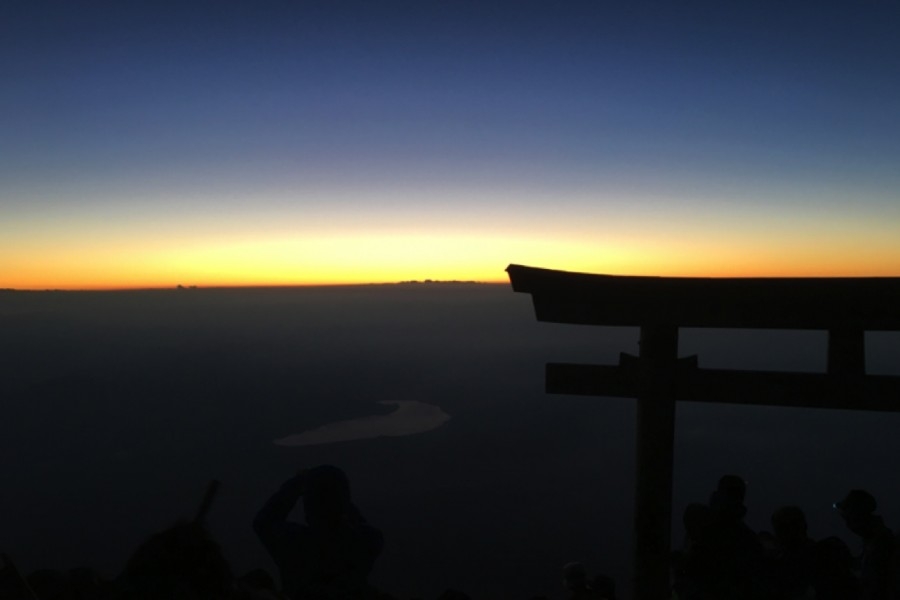
 The sunrise from the top of Mt. Fuji in Japan in August 2016. Students in the International Disaster Reconnaissance Studies class that semester hiked all night to reach the top of the mountain in time for this view. (Photo: Kieron McCarthy) |
The School of Civil and Environmental Engineering will send dozens of students to four continents during Spring Break, giving them a chance to make a difference in the communities they visit and experience the reality of the engineering they have been studying.
Some students will travel with classmates and professors to learn course material up close. Others will do research or service projects. They’re headed to South America, Europe, Asia and Africa.
China and Japan
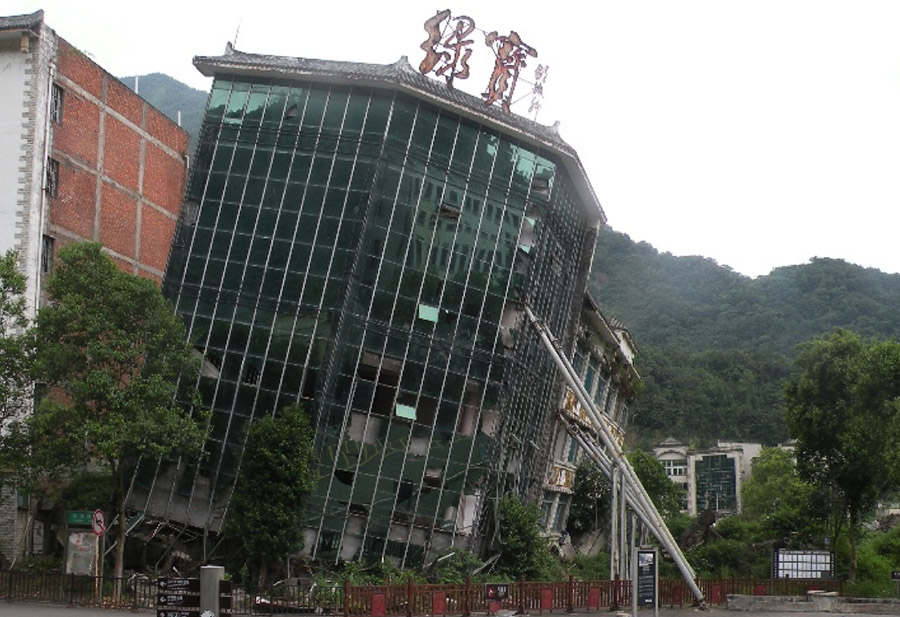 This building in Old Beichuan, China, performed well structurally in a 2008 earthquake, but its base failed as a result of the ground motion. It remains tilting heavily to one side in the city, which has been turned into a memorial for the thousands of people who died in the ‘quake and subsequent landslides and flood. Old Beichuan is one of the sites students in David Frost's International Disaster Reconnaissance class will visit during their Spring Break trip to China and Japan. (Photo: Donald Smith) |
David Frost is taking his International Disaster Reconnaissance class to China and Japan, where they’ll tour areas damaged by earthquakes, landslides and tsunamis. It’s one of three classes affiliated with the global engineering leadership minor that will be traveling during the week.
“I see this class as a way to experience Chinese and Japanese culture within the context of the rebuilding and relief efforts needed after some of the extreme events we're learning about in the classroom,” said Anna Deily, a fourth-year civil engineering student going on the trip.
“It's a different way of looking at a culture than experiencing it as a tourist, and I wanted to get in on that.”
The class will visit a town destroyed by an earthquake and subsequent landslides and flooding. The Chinese government moved residents to a new community but preserved the city as a memorial to the lives lost. They’ll also visit parts of Japan where a tsunami came ashore and the atomic bomb site in Hiroshima.
“I'm most looking forward to traveling to the towns surrounding Chengdu that were most impacted by landslides to see in person the innovative support systems implemented by the Chinese,” Deily said.
The class expects to blog regularly about their experiences at coordinates.ce.gatech.edu. The trip also includes stops at iconic spots like the Great Wall of China, Tiananmen Square, and the Imperial Palace in Tokyo.
Bolivia
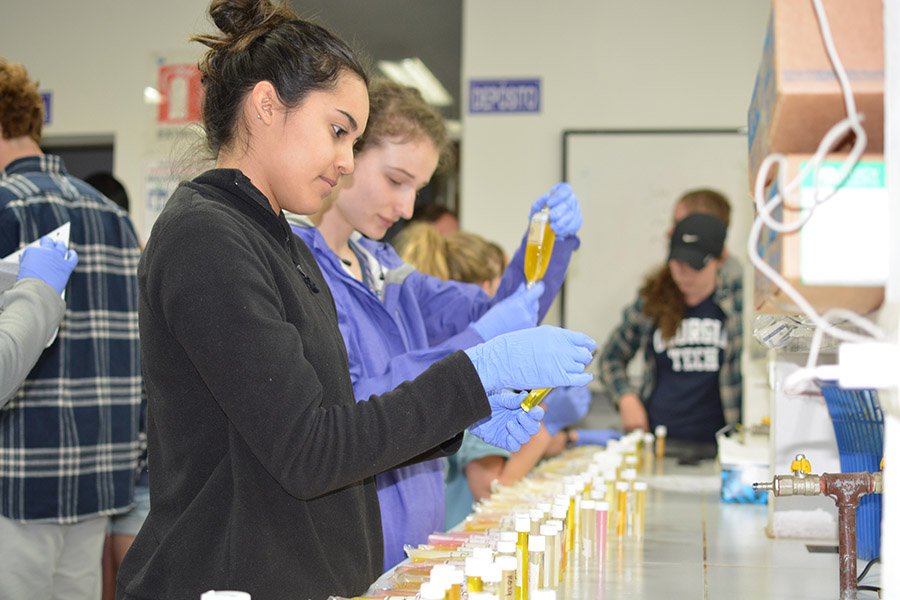 Students test water samples collected in Bolivia during their 2017 trip with Joe Brown's Environmental Technology in the Developing World class. Brown takes another group of students to La Paz this Spring Break to study water quality in the city's Choqueyapu River. (Photo Courtesy: Rachel Brashear) |
Joe Brown takes his fourth class to South America this year to study water quality in La Paz, Bolivia.
“We’re focusing on measuring environmental quality of the Choqueyapu River, which runs through the city,” Brown said, “working with Universidad Catolica Boliviana — the Catholic University of Bolivia.”
Brown said students in his Environmental Technology in the Developing World class will work in teams with a group of engineering students from the university as they collect data about urban water and sanitation.
Fourth-year environmental engineering major Joel Seibel said he’s long known he wanted to work in developing countries, and the trip is a chance to do that.
“As soon as I saw this class, I knew I needed to be in it,” Seibel said. “I don't think there's an intellectual or academic equivalent to actually going somewhere, being there and seeing something for yourself.”
In the past, Brown’s students have fanned out in communities around the Bolivian capital to assess the impact of intermittent water supply on water quality, compare low-cost water testing methods to verify their usefulness, or talk to residents about their water. This year, they’ll stay in La Paz.
“I'm really hoping to get a basic understanding of what the water crisis looks like and what sort of things I can do to contribute,” Seibel said. “I'm most looking forward to meeting some Bolivians and learning about them.”
Netherlands
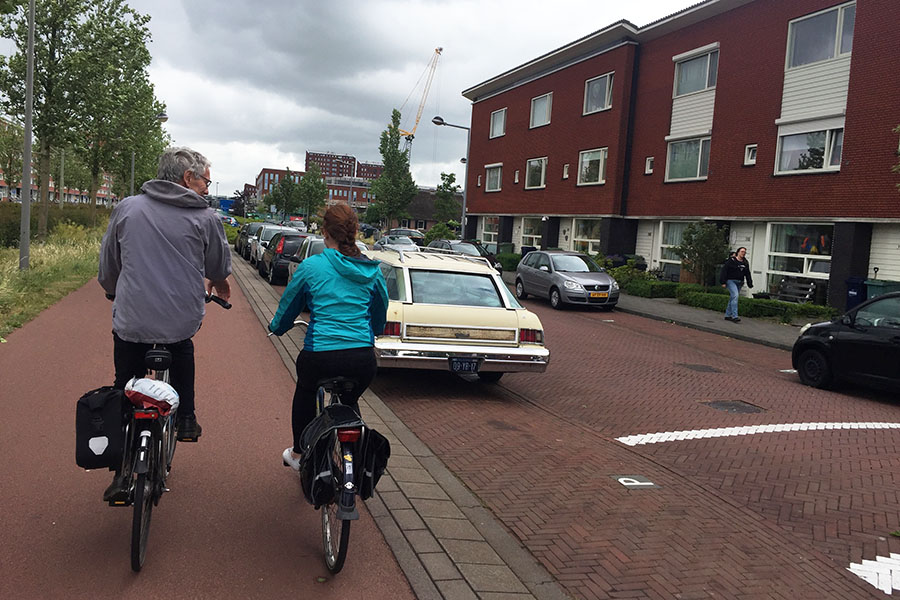 Regional planner and engineer Jan Termorshuizen, left, rides with School of Civil and Environmental Engineering master's student Annie Blissit along a cycle track in the Netherlands in May 2017. Termorshuizen was one of the local officials who helped teach students in Kari Watkins' Sustainable Transportation Abroad class about the Dutch transportation system. (Photo: Anna Nord) |
Students in Kari Watkins’ Sustainable Transportation Abroad course will spend the break biking miles across the Netherlands, experiencing the country’s famed integrated transportation systems and bicycle infrastructure.
They’ll set up a home base in Delft but visit Amsterdam and The Hague to study sustainable network design, how suburbs fit into the Dutch system, and how culture influences the Dutch approach to transportation.
“I hope to learn a lot of things from my Netherlands trip,” said Richard Sinz-Lopez, a civil engineering undergraduate traveling with the class, “but what I really want to learn is how they’re so effective, as a whole society, in eschewing motor vehicles in favor of a huge bicycle system.”
When students return, they’ll compare infrastructure here and in the Netherlands and complete a project designing infrastructure for the United States using Dutch approaches.
For fifth-year civil engineering student Andrew Pofahl, the trip is about learning family history — his great-grandparents immigrated from the Netherlands — and preparing for his career.
“After graduation, I will be working for a consulting firm doing transportation planning and design work here in Atlanta, and I want to be able to bring in elements of things that are done in the Netherlands to improve both transit and cycling in the metro Atlanta area,” Pofahl said.
Each year, Watkins invites a few transportation professionals to join the class on the trip as a learning opportunity for them and a mentoring experience for the students. She also requires students to reflect on their experiences on a blog: coordinates.ce.gatech.edu.
“Exploring is one of my favorite things to do and when some of my most valuable learning takes place,” said fourth-year civil engineering student Kaitlyn Schaffer. “I have always thought the coolest aspects of civil engineering are having the opportunity to serve communities and the potential to see my designs in use every day.”
Uganda
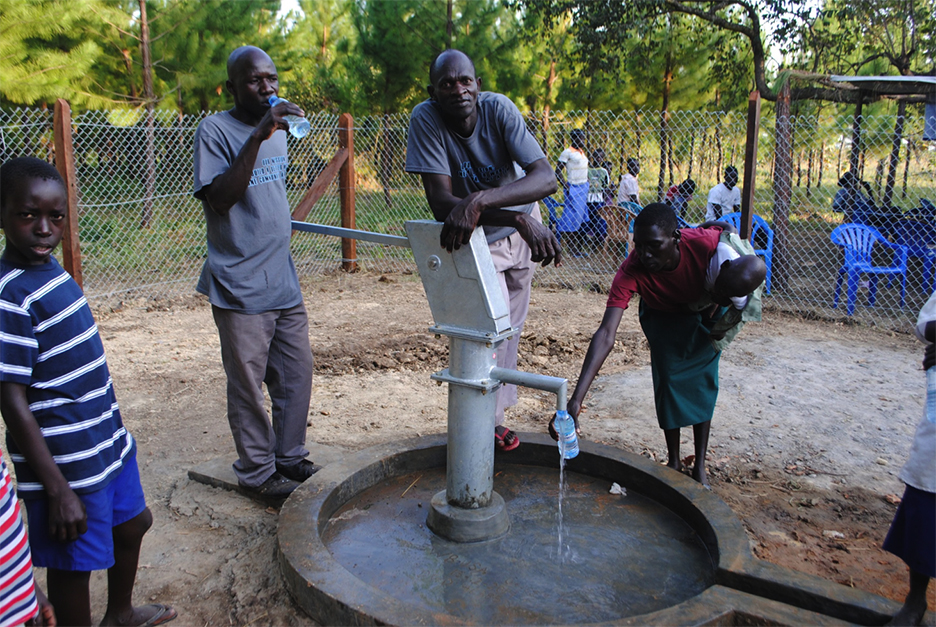 Residents of Oloo, Uganda, drink water from the well and hand pump Georgia Tech students installed in December 2014. Tech's Engineers Without Borders chapter has been working with the community for years on the project, and a group of students will travel to the village during Spring Break to continue expanding the system. Led by civil engineering major Ashley Maynard, they plan to install a new water tap along a pipeline the group built last year. (Photo Courtesy: Engineers Without Borders Georgia Tech) |
A final group of students flies to Africa for their Spring Break, not under the auspices of the School but as members of the Georgia Tech chapter of Engineers Without Borders.
Led by civil engineering senior Ashley Maynard, the group will install a new water tap along a pipeline previous travelers built last year in Oloo, Uganda. EWB has partnered with the community and a local nonprofit since 2012 to provide new water infrastructure for residents.
“We’re also focusing our time on personal surveys, focus groups, and community training to better understand the community's capacity and goals and ensuring they align with what was agreed on in 2012 when we first began our partnership with them,” Maynard said.
The group of five students — a mix of civil, mechanical and biomedical engineering undergrads — will travel with two mentors who are professional engineers and have helped with the project.
Over the years, student groups have traveled to the village to assess local water supplies, drill a well and install pumps, build storage tanks, and lay pipe to provide water to about a thousand people. Maynard is the second civil engineering student to lead the project.
